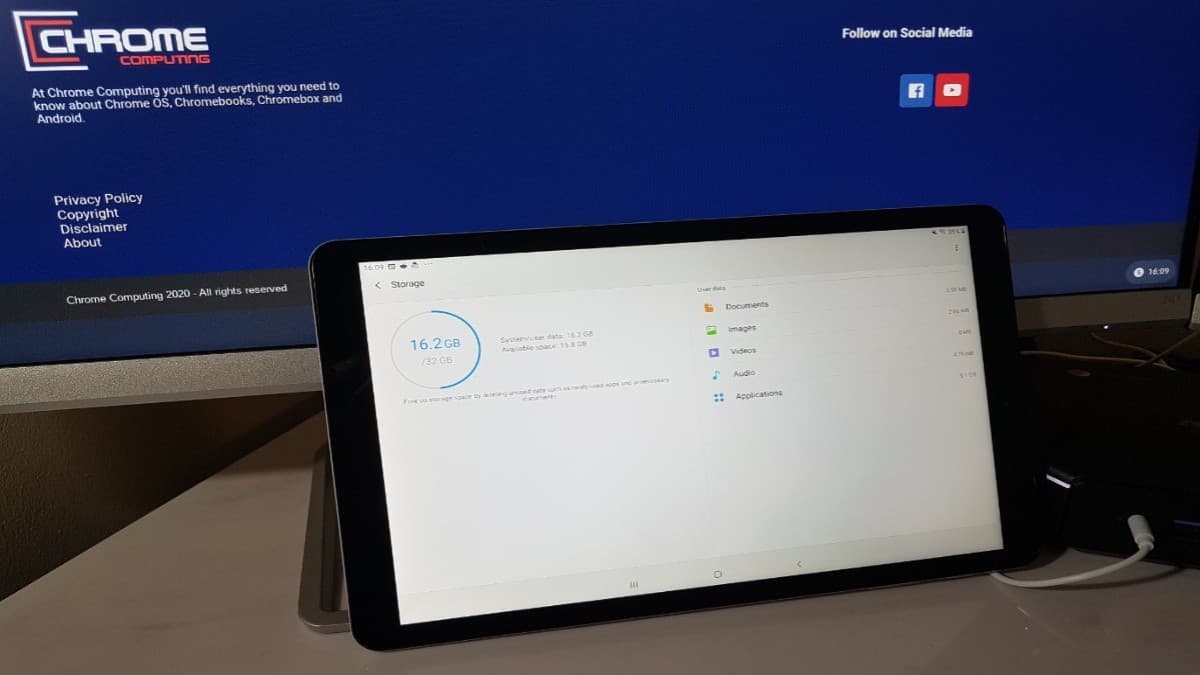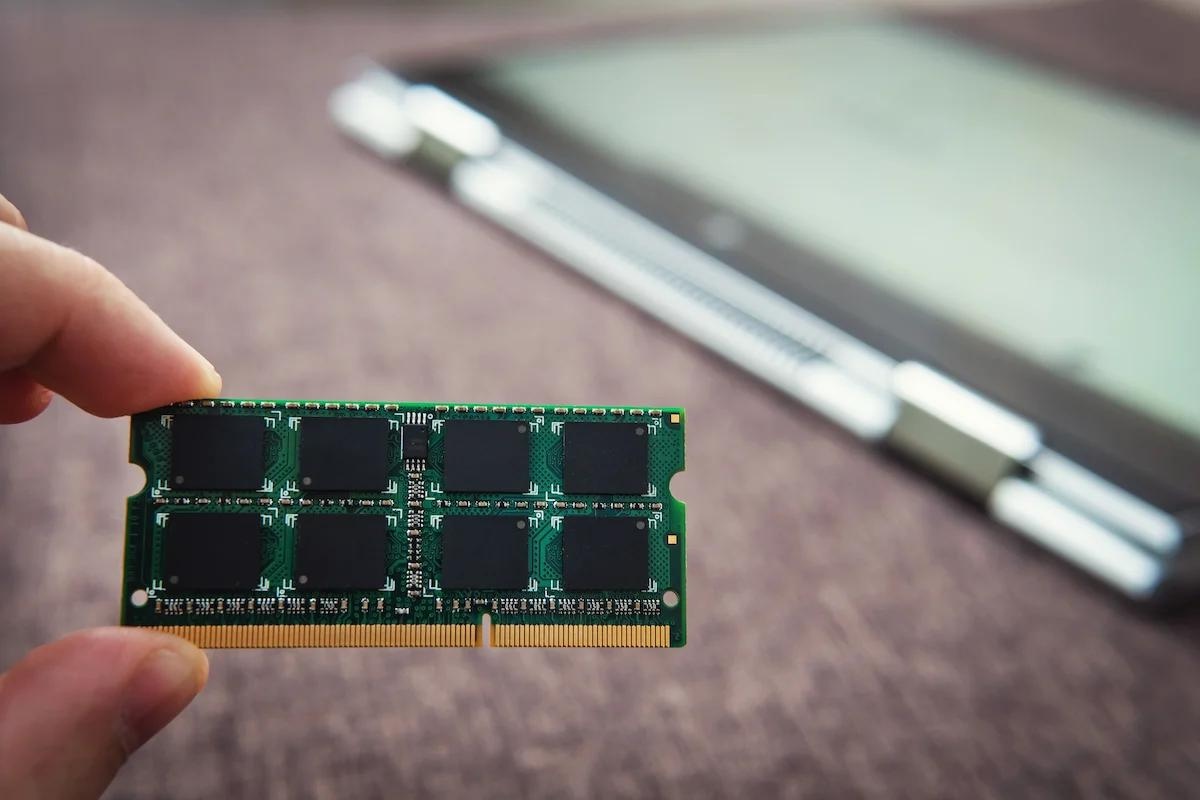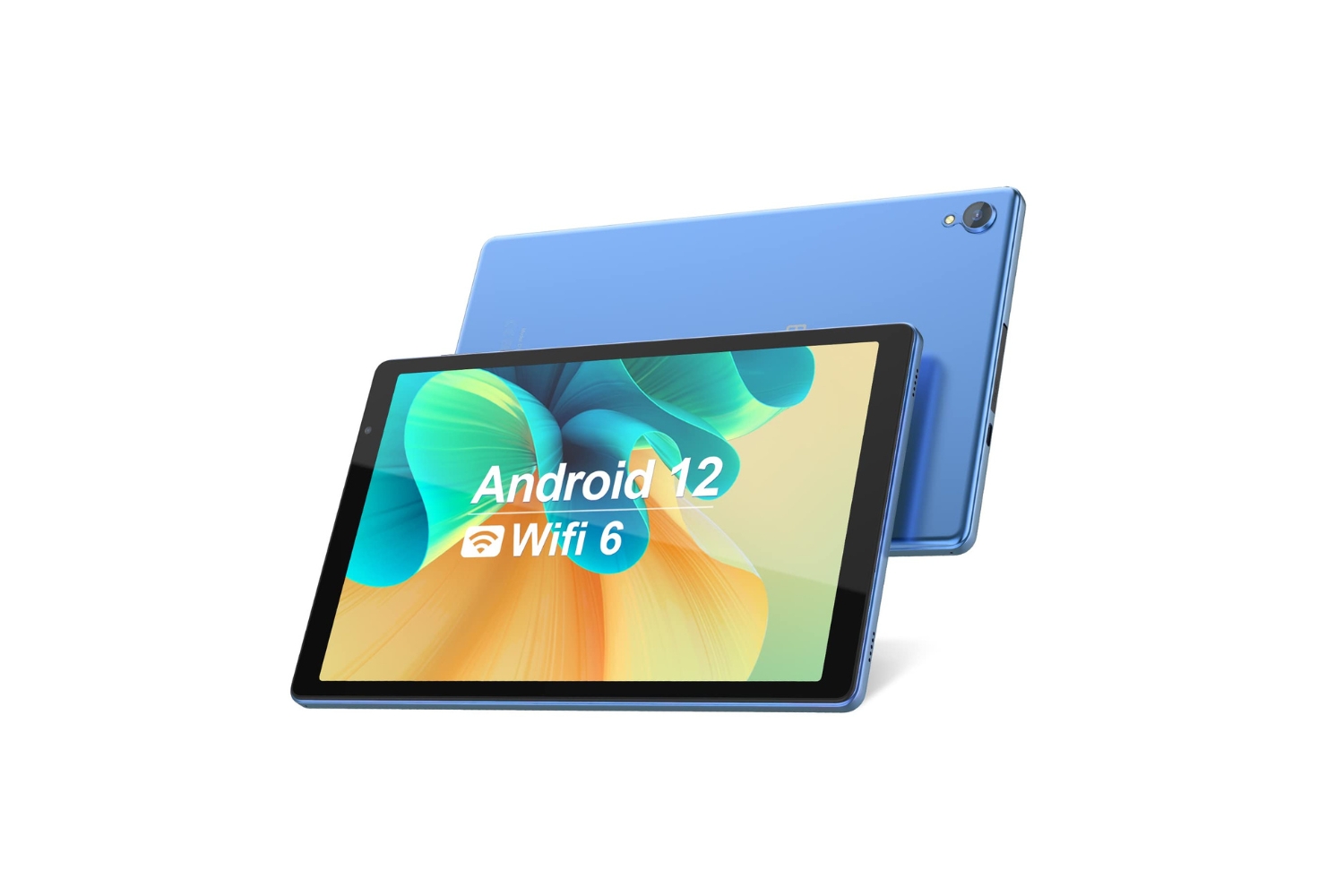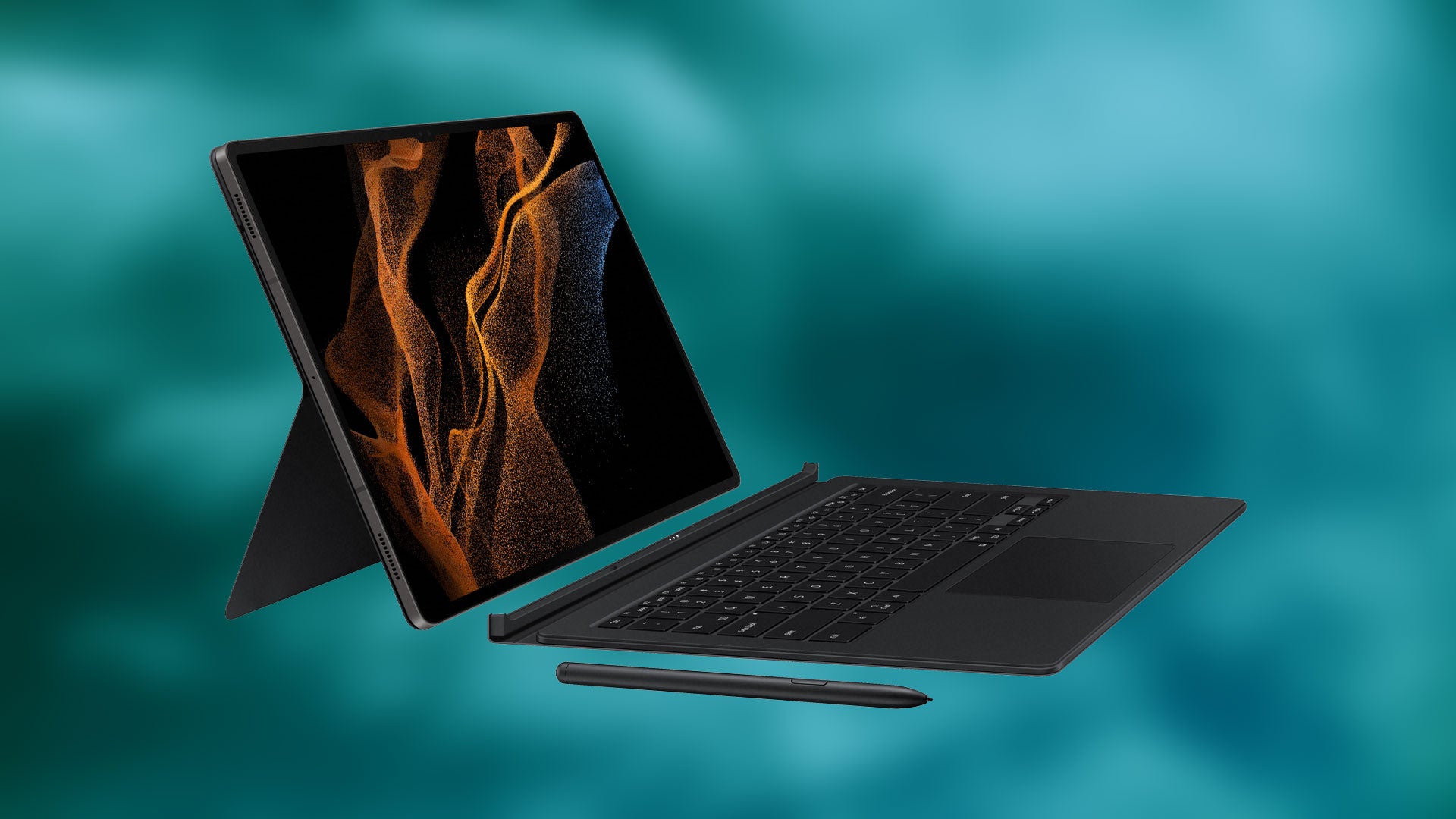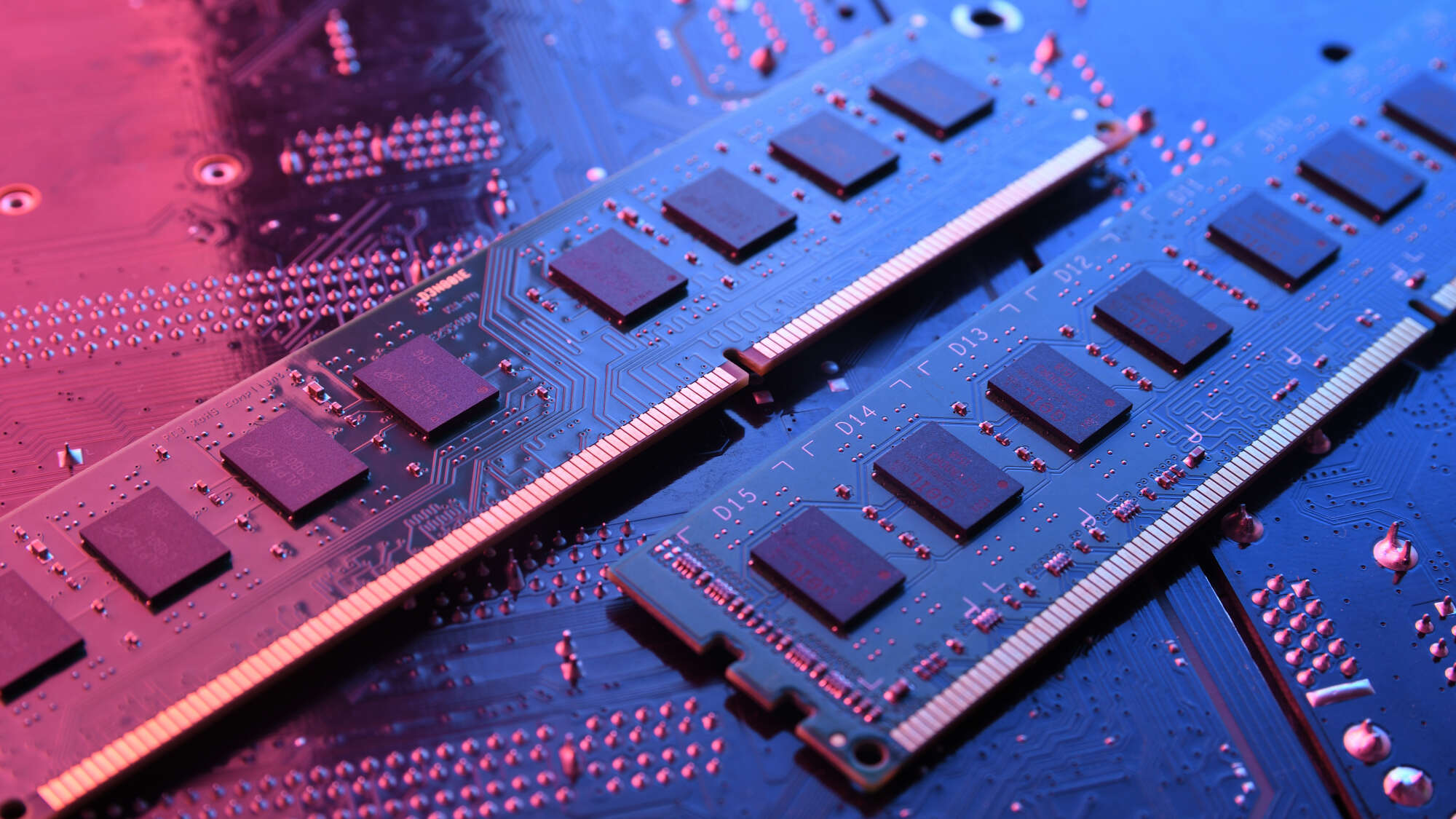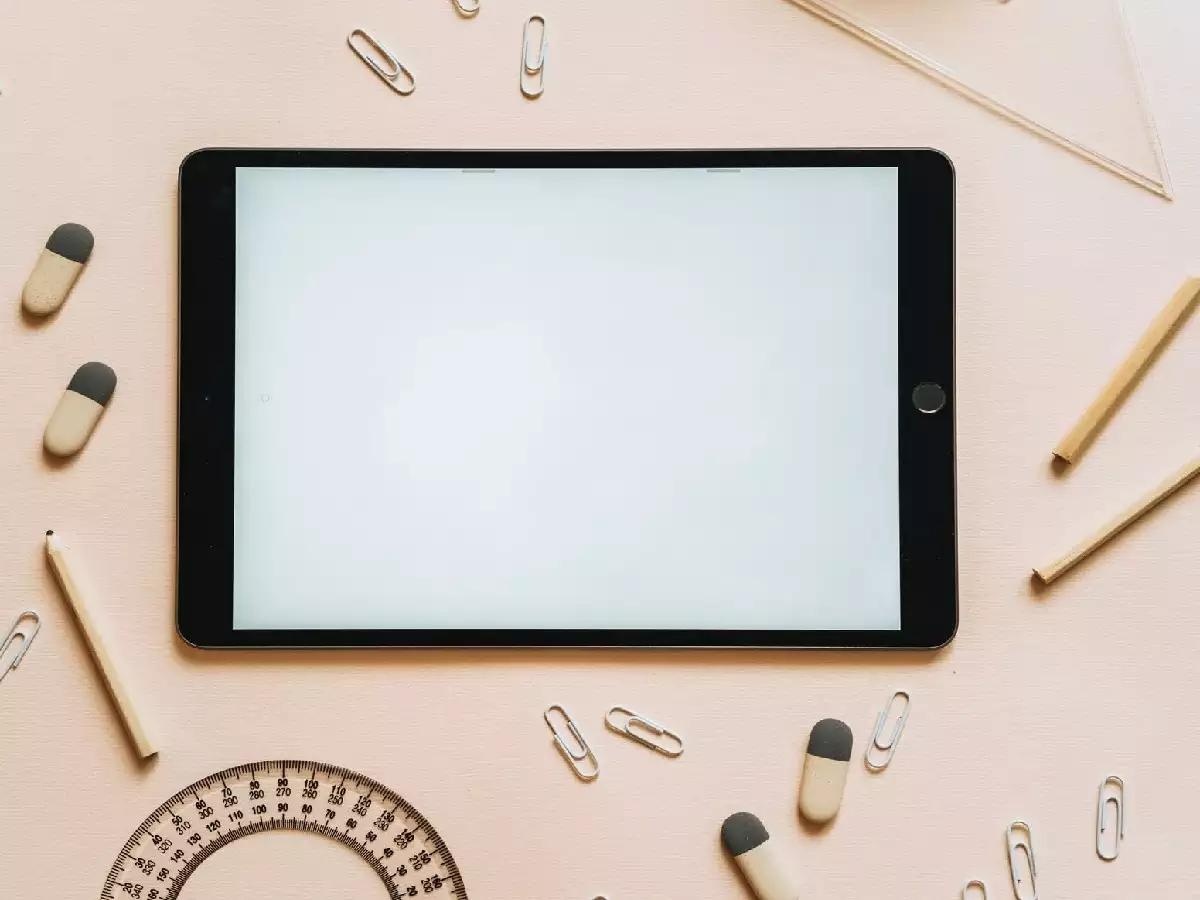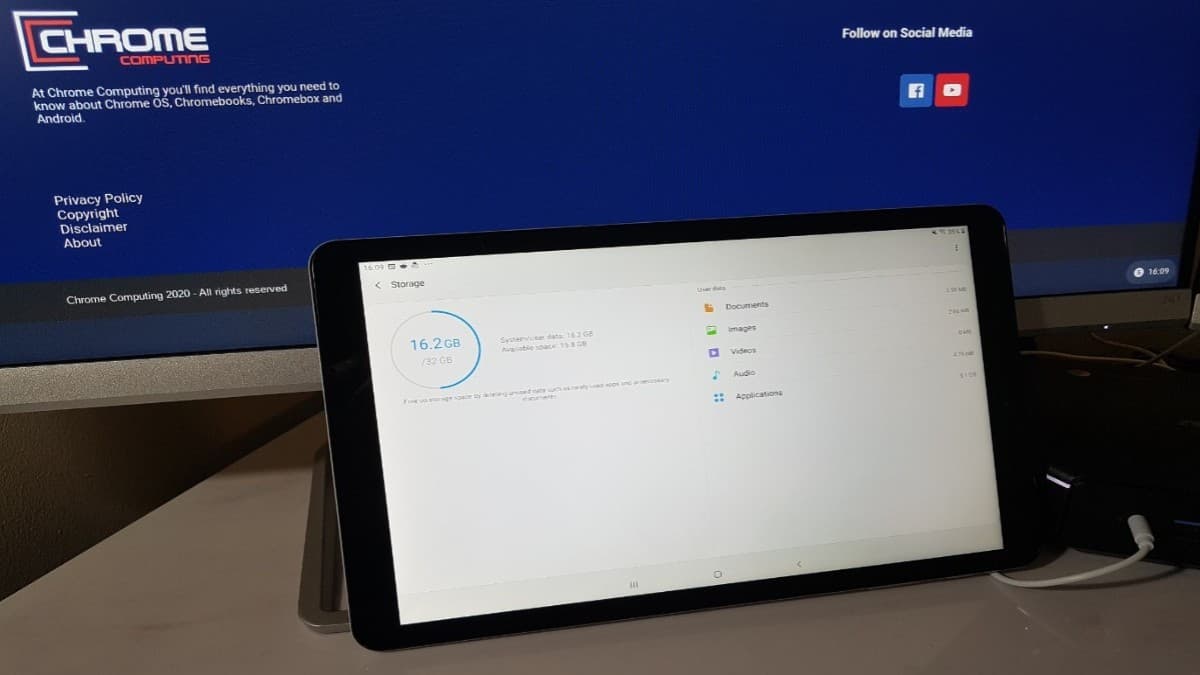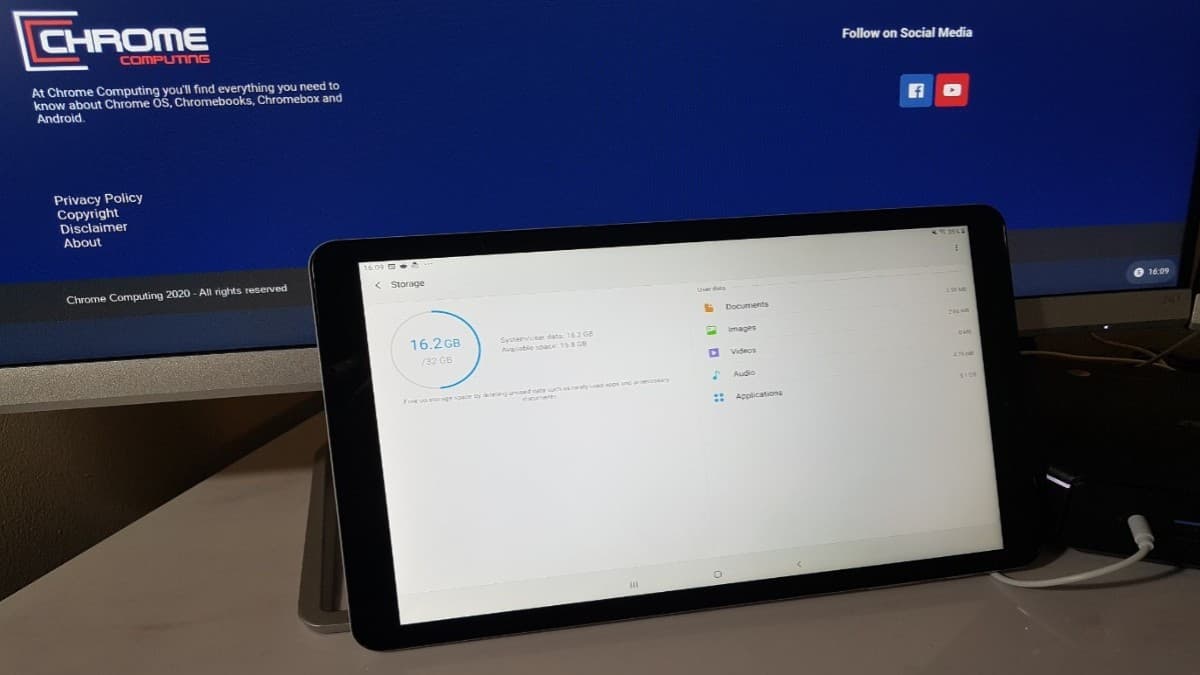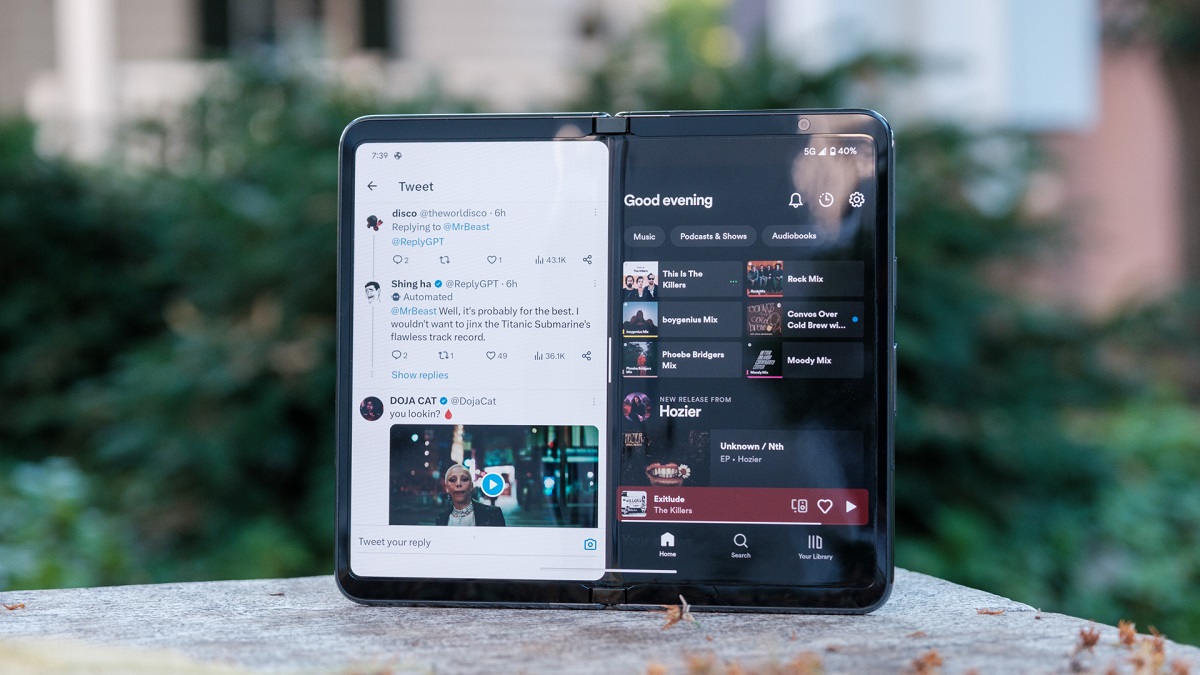Introduction
Welcome to the world of tablets, where portability and functionality meet. Whether you’re using a tablet for productivity, entertainment, or both, one crucial component you need to consider is the amount of RAM. RAM, or Random Access Memory, plays a vital role in the performance and multitasking capabilities of a tablet.
But how much RAM do you really need for a tablet? The answer to this question depends on various factors, including your usage patterns, specific requirements, and the operating system of your device. In this article, we’ll provide you with a comprehensive guide on determining the optimal amount of RAM for your tablet.
Before we delve into the details, let’s understand what RAM is and why it’s essential for a tablet. RAM is a type of computer memory that enables the device to store and access data quickly. It provides temporary storage for running applications, allowing the device to perform tasks efficiently. Essentially, the more RAM your tablet has, the smoother and faster it will perform, especially when multitasking or running resource-intensive applications.
Now that we have an overview of RAM and its significance let’s explore the various factors you should consider when determining the amount of RAM needed for your tablet.
What is RAM and why is it important for a tablet?
RAM, or Random Access Memory, is a critical component of a tablet’s hardware that plays a crucial role in its performance. It serves as the temporary storage for data that the tablet’s processor needs to access quickly. Unlike permanent storage options like the internal storage or SD card, RAM is volatile and loses its data when the device is powered off or restarted.
The importance of RAM in a tablet cannot be understated. It directly impacts the device’s ability to handle multiple tasks simultaneously, run resource-intensive applications smoothly, and maintain overall performance efficiency. When you open an application on your tablet, it gets loaded into RAM, allowing the processor to quickly access and execute the app’s data. The more RAM available, the more apps can be stored in it, reducing the need for the device to constantly access internal storage, resulting in faster response times and smoother multitasking.
Tablets are often used for a variety of tasks, ranging from web browsing, emailing, and document editing to gaming, multimedia consumption, and creative work. Each of these activities requires a varying amount of RAM to ensure optimal performance. For basic tasks like web browsing and casual app usage, a tablet with lower RAM capacity may suffice. However, if you frequently use resource-intensive applications, engage in multitasking, or enjoy gaming or media consumption, having ample RAM becomes essential.
Furthermore, RAM also impacts the overall user experience and responsiveness of the tablet. Inadequate RAM can lead to sluggishness, longer app loading times, and decreased performance efficiency. It may also cause apps to crash or force background tasks to be terminated prematurely, disrupting your workflow.
Overall, RAM is a fundamental component of a tablet that directly influences its performance, multitasking capabilities, and overall user experience. Understanding the importance of RAM and how it aligns with your specific requirements will enable you to make an informed decision when choosing a tablet with the right amount of RAM for your needs.
Factors to consider when determining the amount of RAM needed for a tablet
When determining the amount of RAM needed for a tablet, it’s important to consider several factors that will directly impact your device’s performance and multitasking capabilities. While there is no one-size-fits-all answer, evaluating these factors will help you make an informed decision:
- Usage Patterns: Assessing your typical usage patterns is crucial in determining the required amount of RAM. If you primarily use your tablet for basic tasks like web browsing, email, and light app usage, 2GB to 4GB of RAM should be sufficient. However, if you engage in resource-intensive activities like gaming, multimedia editing, or heavy multitasking, you may need a tablet with 6GB to 8GB of RAM or more.
- Specific Requirements: The specific tasks and applications you use on your tablet will play a significant role in determining the necessary RAM. Applications like video editing software, graphic-intensive games, and virtualization tools require more RAM to run smoothly. Consider your specific requirements and ensure that the tablet’s RAM capacity can handle the demanding applications you intend to use.
- Operating System: Different operating systems have varying RAM requirements. For example, Android tablets tend to have higher RAM requirements compared to iOS tablets due to differences in memory management. Consider the specific operating system and version when assessing the RAM needs of your tablet.
- Future-proofing: Investing in a tablet with higher RAM capacity can provide future-proofing benefits. As applications and operating systems become more advanced and resource-intensive over time, having more RAM will help ensure that your tablet can handle these advancements without compromising performance.
- Budget: Finally, it’s important to consider your budget when determining the amount of RAM needed. Higher RAM capacities often come with a higher price tag. Evaluate your budget and strike a balance between the required RAM capacity and other specifications that are important to you, such as storage, display quality, and processor power.
By considering these factors, you can make an informed decision about the amount of RAM needed for your tablet. Remember to strike a balance between your current needs and future requirements to maximize the longevity and performance of your device.
Minimum RAM requirements for basic tablet usage
If you primarily use your tablet for basic tasks like web browsing, email, social media, and light app usage, you can get by with a tablet that has a minimum RAM capacity. While the exact minimum requirements can vary depending on the specific operating system and version, here are some general guidelines:
- Android: For basic Android tablet usage, a device with 2GB of RAM is typically sufficient. This allows for smooth web browsing, social media app usage, and email management without noticeable lag or slowdown.
- iOS: iOS is known for its efficient memory management, and thus, iPads require less RAM compared to Android tablets for similar tasks. A minimum of 2GB of RAM on an iPad should be enough for basic usage. This will enable you to browse the web, check emails, and use productivity apps seamlessly.
Having the minimum RAM requirements ensures that your tablet can handle basic tasks without significant slowdowns or performance issues. However, keep in mind that these requirements may not be sufficient for heavier usage or running multiple apps simultaneously. If you anticipate engaging in more resource-intensive activities or want to future-proof your device, opting for a tablet with higher RAM capacity is recommended.
It’s worth noting that some entry-level tablets may come with even lower RAM capacities, like 1GB, which can still handle basic usage but may exhibit occasional performance hiccups. Assess your usage patterns and choose the RAM capacity that aligns with your needs and budget.
Remember, the minimum RAM requirements for basic tablet usage may not be suitable if you intend to use resource-intensive applications or engage in multitasking. Be sure to evaluate your specific requirements and consider the factors mentioned earlier to ensure optimal performance and a smooth user experience.
Recommended RAM for productivity and multitasking
If you use your tablet for productivity purposes, such as working with office applications, multitasking between multiple apps, and handling complex tasks, it’s important to have an adequate amount of RAM to ensure smooth performance and efficient multitasking. Here are some recommended RAM capacities for productivity and multitasking:
- Android: For productivity on an Android tablet, a minimum of 4GB of RAM is generally recommended. This allows for seamless multitasking, running multiple productivity apps simultaneously, and handling complex tasks with ease. However, if you frequently work with resource-intensive applications or require extensive multitasking capabilities, consider opting for a tablet with 6GB to 8GB of RAM or more.
- iOS: On the iOS side, iPads with 4GB of RAM are considered sufficient for productivity and multitasking activities. Thanks to iOS’s efficient memory management, iPads can handle multitasking with ease, allowing you to switch between apps and work on multiple tasks simultaneously without a noticeable lag or performance decrease.
Having recommended RAM for productivity and multitasking ensures that your tablet can handle demanding apps, large files, and a multitude of tasks without compromising performance. It allows for smooth switching between applications, quicker app loading times, and smoother interaction.
Keep in mind that if you often work with memory-intensive applications like video editing software, graphic design tools, or virtual machines, opting for a higher RAM capacity will enhance your productivity and provide a smoother experience. Additionally, if you frequently handle large files or work with multiple data-heavy applications simultaneously, having a tablet with 6GB to 8GB of RAM or more is advisable.
Consider your specific needs and usage patterns to determine the ideal RAM capacity for your productivity and multitasking requirements. Investing in a tablet with sufficient RAM will ensure that you can work efficiently, switch between tasks seamlessly, and improve your overall productivity.
Gaming and multimedia: How much RAM is sufficient?
If you are an avid gamer or enjoy multimedia activities like video streaming, photo editing, or graphic-intensive applications, having ample RAM is essential for a smooth and immersive experience. Here are some guidelines on how much RAM is sufficient for gaming and multimedia on a tablet:
- Android: For casual gaming and multimedia activities on an Android tablet, 4GB of RAM is generally sufficient. This allows for smooth gameplay and the ability to run multimedia apps without significant lag or performance issues. However, if you are a serious gamer or engage in more demanding multimedia tasks, opting for a tablet with 6GB to 8GB of RAM or more is advisable.
- iOS: iPads are known for their powerful hardware and optimized software, making them excellent devices for gaming and multimedia. Even with 4GB of RAM, iPads can handle most gaming and multimedia tasks seamlessly. However, if you want to take your gaming experience to the next level or engage in professional-level multimedia work, considering a tablet with 6GB to 8GB of RAM or more is recommended.
Having sufficient RAM for gaming and multimedia ensures that your tablet can handle resource-intensive games, graphics, and playback smoothly without any noticeable hiccups or performance bottlenecks. It allows for faster loading times, smoother frame rates, and improved overall gameplay or multimedia experience.
Remember that gaming and multimedia applications, especially high-definition games or video editing software, can be memory-intensive. They require a significant amount of RAM to store and process large amounts of data in real-time. By opting for a tablet with higher RAM capacity, you can future-proof your device and ensure that it can handle the latest gaming titles and multimedia advancements without sacrificing performance.
Consider your gaming and multimedia needs, as well as the specific applications or games you plan to use, when determining the appropriate RAM capacity for your tablet. Investing in a tablet with sufficient RAM will enhance your gaming experience and allow you to immerse yourself in high-quality multimedia content.
Future-proofing your tablet with higher RAM capacity
When purchasing a tablet, it’s important to not only consider your current needs but also future-proof your device to ensure longevity and compatibility with upcoming advancements in technology. One way to future-proof your tablet is by opting for a higher RAM capacity. Here are some reasons why higher RAM capacity contributes to future-proofing your tablet:
- Advancements in Applications: As technology progresses, applications become more feature-rich and demanding in terms of resources. This includes productivity tools, graphic-intensive games, and multimedia editing software. By choosing a tablet with higher RAM capacity, you can ensure that your device can handle these future advancements without experiencing performance issues or slowdowns.
- Operating System Updates: Operating system updates often introduce new features, improved performance, and updated security protocols. However, these updates can also require more resources, including RAM. Having a tablet with higher RAM capacity ensures that your device can smoothly handle these updates without sacrificing performance or encountering compatibility issues.
- Multitasking: With the increasing need for multitasking, having more RAM becomes crucial. As you juggle between multiple applications, browser tabs, and background processes, higher RAM capacity allows for seamless switching and smoother performance. By investing in a tablet with higher RAM, you can ensure that your multitasking experience remains efficient even as your requirements evolve over time.
- Gaming and Multimedia: Gaming and multimedia applications continuously push the boundaries of technology. High-definition graphics, Virtual Reality (VR) compatibility, and advanced rendering techniques require ample resources, including RAM. Choosing a tablet with higher RAM capacity ensures that you can enjoy the latest gaming titles and multimedia experiences without sacrificing performance or visual quality.
Future-proofing your tablet with a higher RAM capacity allows you to stay ahead of technological advancements and ensure that your device can handle emerging trends and demands efficiently. It ensures that your tablet remains relevant and capable of delivering optimal performance even as technology evolves.
While it might be tempting to opt for the minimum RAM required for your current needs, it’s important to consider the longevity of your purchase. Investing in a tablet with higher RAM not only extends the usable lifespan of your device but also provides a smoother and more enjoyable user experience as technology advances.
Keep in mind that while higher RAM capacity contributes to future-proofing your tablet, it’s important to consider other factors such as processor power, storage capacity, and display quality to ensure a well-rounded and efficient device that can meet your evolving needs.
The impact of operating systems on RAM requirements
The choice of operating system plays a significant role in determining the RAM requirements for a tablet. Different operating systems have varying levels of efficiency when it comes to managing memory usage. Here’s a closer look at how the operating system impacts RAM requirements:
- Android: Android is known for its versatility and wide range of customization options. However, this flexibility often results in higher RAM requirements compared to other operating systems. Android-based tablets typically require more RAM to provide smooth performance and multitasking capabilities. As a general guideline, Android tablets with 2GB to 4GB of RAM can handle basic tasks, while tablets with 4GB to 8GB of RAM or more are recommended for heavier usage, gaming, and multimedia activities.
- iOS: Apple’s iOS is known for its optimized performance and efficient memory management. iPads with lower RAM capacities can often perform comparably to Android tablets with higher RAM capacities. Thanks to iOS’s ability to handle memory more efficiently, iPads with 2GB to 4GB of RAM are generally sufficient for most tasks, including multitasking, gaming, and multimedia activities. However, for power users or those who engage in resource-intensive tasks, opting for an iPad with 4GB to 8GB or more of RAM is recommended.
- Windows: Tablets running Windows operating system can handle a wide range of tasks including productivity work, gaming, and multimedia activities. Windows tablets typically require more RAM due to the nature of the operating system and the ability to run desktop-class applications. Depending on your usage and specific requirements, a Windows tablet with 4GB to 8GB or more of RAM is recommended for smooth performance and efficient multitasking.
It’s important to consider the RAM requirements of the specific operating system when choosing a tablet. The operating system’s memory management capabilities directly impact the device’s performance, multitasking capabilities, and overall user experience. Understanding the RAM requirements of the chosen operating system will help you make an informed decision and ensure that your tablet can handle your intended usage patterns.
Keep in mind that as operating systems evolve and introduce new features and functionalities, their RAM requirements may change. It is advisable to stay updated with the recommended RAM capacities for your chosen operating system to ensure optimal performance and compatibility with future updates and advancements.
By considering the RAM requirements of your chosen operating system, you can select a tablet that aligns with your usage patterns, performance expectations, and desired level of multitasking capabilities.
Balancing price and performance when choosing RAM for a tablet
When selecting a tablet, it’s crucial to find the right balance between price and performance, including the amount of RAM. While higher RAM capacity generally leads to better performance, it also comes at a higher cost. Here are some considerations to help you strike the right balance:
- Usage Patterns: Evaluate your usage patterns and the specific tasks you intend to perform on your tablet. If you primarily use your tablet for basic tasks like web browsing, social media, and email, opting for a tablet with a lower RAM capacity can save you money without compromising performance. However, if you engage in resource-intensive activities like gaming, multimedia editing, or heavy multitasking, investing in a tablet with higher RAM capacity will result in a smoother and more enjoyable user experience.
- Budget: Determine your budget for the tablet purchase. Higher RAM capacity generally comes with a higher price tag. Consider your budget and find a balance between the RAM capacity and other important features that matter to you, such as storage capacity, display quality, processor power, and battery life. Prioritize the aspects that are most essential to your needs and allocate your budget accordingly.
- Future-proofing: Consider your long-term goals and the longevity you desire from your tablet. Investing in a tablet with higher RAM capacity can provide future-proofing benefits, ensuring that your device can handle evolving technology and emerging applications without the need for an immediate upgrade. By considering the future requirements, you can make a more informed decision and potentially save money in the long run.
- Consider Refurbished or Older Models: If budget is a significant constraint, consider purchasing a refurbished or older model tablet with a lower price point. While these tablets may have slightly lower RAM capacities, they can still perform well for basic tasks and provide a cost-effective option for those on a tight budget.
- Read Reviews and Compare: Before making a final decision, read reviews, compare specifications and prices across different tablets, and consider user feedback. This will help you identify tablets that offer a good balance between price and performance, ensuring that you get the best value for your money.
Finding the right balance between price and performance when choosing the amount of RAM for your tablet is key. Assessing your usage patterns, budget, and long-term goals will enable you to make an informed decision that meets your needs without overpaying.
Remember that RAM is just one component of a tablet’s overall performance. Evaluating other specifications, such as the processor, storage, and display quality, will also contribute to the overall performance and user experience. By considering these factors holistically, you can make a wise investment that provides optimal performance and value for your money.
Conclusion
Choosing the right amount of RAM for your tablet is crucial for optimal performance, multitasking capabilities, and overall user experience. By considering various factors such as your usage patterns, specific requirements, operating system, and future-proofing needs, you can make an informed decision that strikes the right balance between price and performance.
For basic tasks like web browsing, emailing, and light app usage, tablets with 2GB to 4GB of RAM are typically sufficient. However, if you engage in productivity work, multitasking, gaming, or multimedia activities, opting for tablets with 4GB to 8GB or more of RAM is advisable to ensure smooth performance and responsiveness.
It’s important to consider the RAM requirements of your chosen operating system, as different operating systems have varying efficiency in managing memory usage. Android tablets generally require higher RAM capacities compared to iOS devices due to differences in memory management. Windows tablets also tend to require more RAM due to the ability to run desktop-class applications.
Balancing price and performance is another critical aspect when choosing the amount of RAM for your tablet. Evaluate your budget, prioritize your needs, and consider factors like future-proofing to ensure that you get the best value for your money. Refurbished or older models can also provide cost-effective options if budget is a significant constraint.
In conclusion, understanding the importance of RAM and considering the specific factors that influence its requirements will help you make an informed decision when choosing a tablet. Remember that RAM is just one component of a tablet’s overall performance, and it’s crucial to consider other specifications like the processor, storage, and display quality to ensure a well-rounded device that meets your needs and preferences.
By carefully considering these factors and striking the right balance, you can choose a tablet with the optimal amount of RAM that will provide you with a smooth, seamless, and enjoyable user experience for your specific usage patterns, now and in the future.







